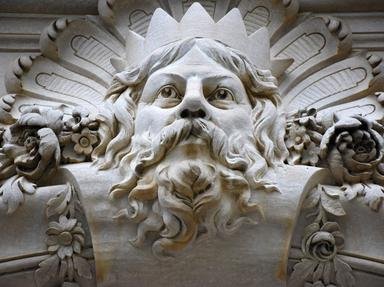Quiz Answer Key and Fun Facts
1. According to Hesiod's "Theogony", Zeus had seven wives, of which the Oceanid nymph Metis was the first. Which goddess, his favourite daughter, did he conceive with her?
2. Which of these disguises did Zeus NOT adopt when seeking to seduce a mortal woman?
3. Which of these gods, according to most accounts, was the only son that Zeus had with Hera?
4. Zeus not only married one of his sisters, he also had a child with another one. Who was she?
5. A number of "group" Greek deities were the offspring of Zeus and his wives or lovers. Which of these - probably the best-known on the list, associated with Mount Helicon - were the daughters of Zeus and his aunt, the Titaness Mnemosyne?
6. Though Zeus often changed his appearance to pursue his love interests, in the case of Io things went the other way around. What was Io changed into in order to protect her from Hera's wrath?
7. Zeus's dalliance with the nymph Aegina produced a son, Aeacus. Through Aeacus's two sons, Peleus and Telamon, Zeus became the great-grandfather of which two great heroes of the Trojan War?
8. In Homer's epics and other sources, Helen of Troy was the daughter of Zeus and Leda. However, other authors report that the world's most beautiful woman was the offspring of the king of the gods and which goddess of divine retribution?
9. Not surprisingly for a god who married his own sister and had children with his aunts, some of Zeus' mortal lovers were also related to him. Who was the heroic son that Zeus fathered on his great-granddaughter Alcmene?
10. Seduced by Zeus, the nymph Callisto, a follower of Artemis, was turned into which animal (later to became a major constellation) as punishment for her indiscretion?
Source: Author
LadyNym
This quiz was reviewed by FunTrivia editor
looney_tunes before going online.
Any errors found in FunTrivia content are routinely corrected through our feedback system.
